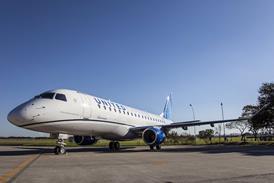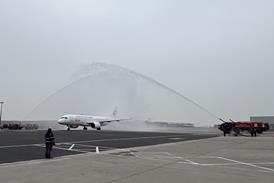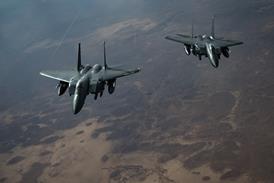In recent weeks, there has been a sharp increase in the flow of news about new aircraft carriers in Asia-Pacific. After years of delays, India finally launched the INS Vikrant, a 37,500t warship designed and developed in India, in the week ended 16 August.
Equipped with a ski ramp to launch fixed-wing aircraft, the Vikrant will eventually carry 12-20 fighters and 10 helicopters. The ship, which still requires extensive work before it can make its maiden voyage, should be deployed by 2018.
Its fixed-wing aircraft element will consist of the recently purchased RAC MiG-29s and, if it is ever developed, a naval variant of the Hindustan Aeronautics Tejas.
The Vikrant's launch closely followed Tokyo's unveiling of its biggest warship since Second World War, the 19,500t Izumo. Capable of carrying 14 helicopters, the Izumo is designated as a "helicopter destroyer". Commissioning of the warship is expected in 2015.
Officials in both New Delhi and Tokyo have tried to accentuate the defensive character of the two ships.
New Delhi says the Vikrant's aircraft will primarily protect other Indian naval assets and, presumably, long-range aircraft such as the Boeing P-8I Neptune operating from bases on the subcontinent.
 |
|---|
| Rex Features |
Tokyo has stressed that the Izumo will serve primarily in the anti-submarine warfare (ASW) and humanitarian relief roles. Given Japan's immense reliance on shipping lanes for both trade and essential supplies, ASW is a key strategic mission. In the Second World War, US submarines made a significant contribution to strangling Japan's economy.
The general media was quick to speculate about whether the Izumo will operate the Lockheed Martin F-35B, the short take-off/vertical landing (STOVL) variant of the joint strike fighter that is being developed for the US Marine Corps.
While the Izumo is certainly large enough to operate the Joint Strike Fighter, it is important to note that Tokyo has not ordered the STOVL variant. In addition, operating the F-35B would preclude the ship from performing the vital ASW mission because the ship's crew, hangar, facilities would need to be repurposed for the operation of advanced fighter jets.
Both flat tops, predictably, drew criticism from Beijing, with the Izumo receiving special condemnation. A lengthy article by state run news agency Xinhua noted that the Izumo conjures up the ghosts of "Japan's militarist past". It points out that it has the same name as a former Imperial navy warship, which participated in the 1930s war between the two countries.
Nonetheless, Beijing is rapidly developing its own aircraft carrier capability. In early July, it announced that it had certificated the first pilots and crew for aircraft carrier operations after a 25-day training deployment of its first aircraft carrier, the Liaoning.
Although the Liaoning is intended as a training carrier, senior navy officials have publicly stated that Beijing wants larger, more capable flat tops.
In early August, images of a large hull section - apparently taken at a Shanghai shipyard - created a stir on Chinese defence websites. The hull section has a large gap that could be intended as part of a hangar bay. In addition, it has a groove on top and this, some observers say, could accommodate a catapult system.
Carriers equipped with catapults are inherently more capable than those that use a ski ramp, allowing aircraft to take off with larger payloads - extending range and combat endurance.
Crucially, catapults allow a carrier to operate airborne early warning & control (AEW&C) aircraft such as the Northrop Grumman E-2 Hawkeye. AEW&C assets are indispensable for a true, high-end power projection capability.
Both new ships will eventually help the Indian and Japanese navies operate farther from shore, but they are not to be confused with the larger, vastly more capable catapult-equipped carriers operated by the US Navy, which can carry up to 90 aircraft including AEW&C types.
Source: Flight International























